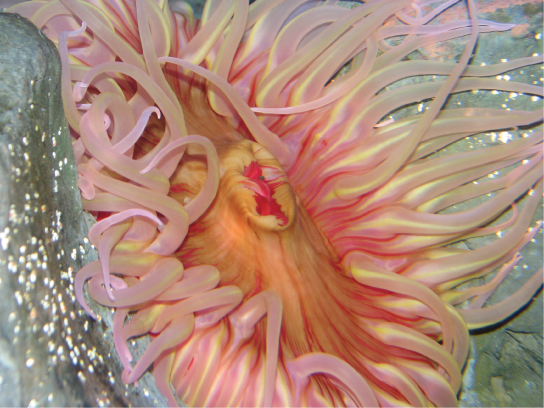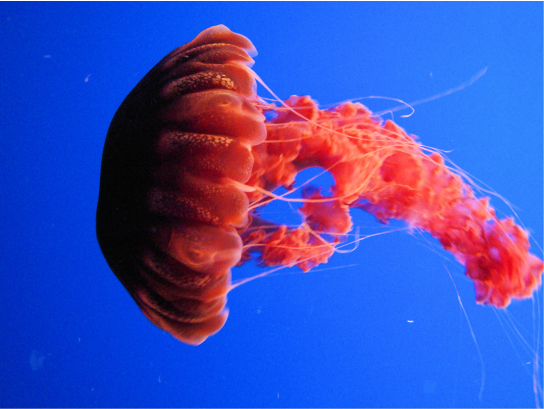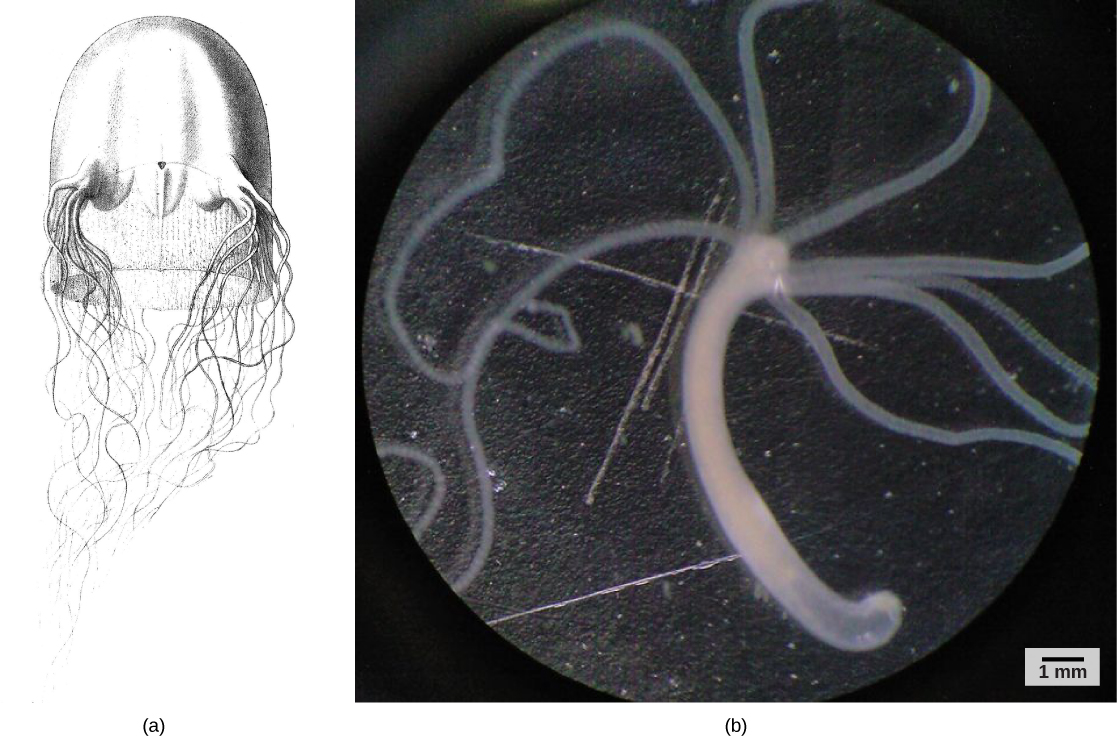| << Chapter < Page | Chapter >> Page > |
The nervous system is primitive, with nerve cells scattered across the body in a network. The function of the nerve cells is to carry signals from sensory cells and to contractile cells. Groups of cells in the nerve net form nerve cords that may be essential for more rapid transmission. Cnidarians perform extracellular digestion , with digestion completed by intracellular digestive processes. Food is taken into the gastrovascular cavity , enzymes are secreted into the cavity, and the cells lining the cavity absorb the nutrient products of the extracellular digestive process. The gastrovascular cavity has only one opening that serves as both a mouth and an anus (an incomplete digestive system). Like the sponges, Cnidarian cells exchange oxygen, carbon dioxide, and nitrogenous wastes by diffusion between cells in the epidermis and gastrodermis with water.
The phylum Cnidaria contains about 10,000 described species divided into four classes: Anthozoa, Scyphozoa, Cubozoa, and Hydrozoa.
The class Anthozoa includes all cnidarians that exhibit a sessile polyp body plan only; in other words, there is no medusa stage within their life cycle. Examples include sea anemones, sea pens, and corals, with an estimated number of 6,100 described species. Sea anemones are usually brightly colored and can attain a size of 1.8 to 10 cm in diameter. These animals are usually cylindrical in shape and are attached to a substrate. A mouth opening is surrounded by tentacles bearing cnidocytes ( [link] ).

Scyphozoans include all the jellies and are motile and exclusively marine with about 200 described species. The medusa is the dominant stage in the life cycle, although there is also a polyp stage. Species range from 2 cm in length to the largest scyphozoan species, Cyanea capillata , at 2 m across. Jellies display a characteristic bell-like body shape ( [link] ).

Identify the life cycle stages of jellies using this video animation game from the New England Aquarium.
The class Cubozoa includes jellies that are square in cross-section and so are known as “box jellyfish.” These species may achieve sizes of 15–25 cm. Cubozoans are anatomically similar to the jellyfish. A prominent difference between the two classes is the arrangement of tentacles. Cubozoans have muscular pads called pedalia at the corners of the square bell canopy, with one or more tentacles attached to each pedalium. In some cases, the digestive system may extend into the pedalia. Cubozoans typically exist in a polyp form that develops from a larva. The polyps may bud to form more polyps and then transform into the medusoid forms.
Hydrozoa includes nearly 3,500 species, “The Hydrozoa Directory,” Peter Schuchert, Muséum Genève, last updated November 2012, http://www.ville-ge.ch/mhng/hydrozoa/hydrozoa-directory.htm. most of which are marine. Most species in this class have both polyp and medusa forms in their life cycle. Many hydrozoans form colonies composed of branches of specialized polyps that share a gastrovascular cavity. Colonies may also be free-floating and contain both medusa and polyp individuals in the colony, as in the Portuguese Man O’War ( Physalia ) or By-the-Wind Sailor ( Velella ). Other species are solitary polyps or solitary medusae. The characteristic shared by all of these species is that their gonads are derived from epidermal tissue, whereas in all other cnidarians, they are derived from gastrodermal tissue ( [link] ab ).

Animals included in phylum Porifera are parazoans and do not possess true tissues. These organisms show a simple organization. Sponges have multiple cell types that are geared toward executing various metabolic functions.
Cnidarians have outer and inner tissue layers sandwiching a noncellular mesoglea. Cnidarians possess a well-formed digestive system and carry out extracellular digestion. The cnidocyte is a specialized cell for delivering toxins to prey and predators. Cnidarians have separate sexes. They have a life cycle that involves morphologically distinct forms—medusoid and polypoid—at various stages in their life cycle.

Notification Switch
Would you like to follow the 'Concepts of biology' conversation and receive update notifications?